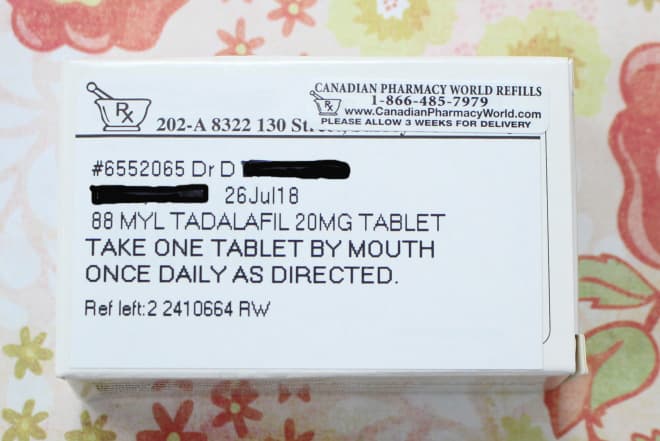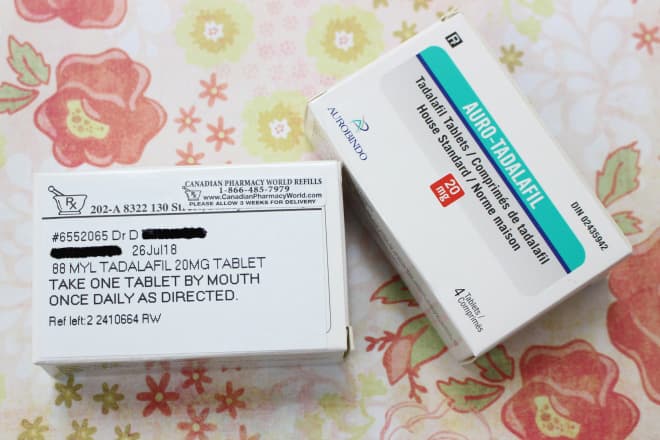
Photo Credit: by @CANPharmaWorld
Understanding and deciphering the information on a prescription or over-the-counter (OTC) medication label purchased at an online Canadian Pharmacy can be difficult if you don’t know what to look for. Sometimes the fonts are too small, and the relevant information is missing. However, knowing exactly what and how to take the medication before its consumed is critically important to your overall health and safety. Each year, millions of people suffer serious adverse drug reactions because they weren’t aware of the risks, interactions, or even what they were taking. At Canadian Pharmacy World, we do our best to educate our customers on the medication they’ve been prescribed, as well as make our labels clear and concise. This is part of the reason we are top rated & verified by CIPA (Canadian International Pharmacy Association). However, an informed consumer is always a safe consumer—but that can mean doing a little research or asking questions before big problems arise.
Why is Reading A Label Important?
Being an informed consumer plays an important role in your overall health and safety. This is especially true when you’re taking medications of any kind. Without being properly informed on what you’re taking, what it’s for, and even what it looks like – you can be in for unexpected emergency room visits, or even death.
• Know what pharmacy you’re ordering from, is it a legit pharmacy with real address and a valid customer service number for contact?
• Know what medication you’re supposed to be on and know both its brand name and generic name.
• Know when to take the medication.
• Know the specific directions on how you are taking your medication; especially the special instructions such as “Swallow Whole or Avoid Grapefruit Products.”
• Know when to refill the medication.
• Double check who the medication is for and verify it’s yours.
• Know when the medication might expire and dispose it properly.
Adverse drug reactions are any kind of injury or reaction caused by taking a medication at its correct dosage – or combining it with other medications, foods, or drinks. While an adverse drug reaction is slim when taking a single medication, the rate of adverse drug reactions increases exponentially when there are 4+ medications being taken by the same patient. That being said, nearly 30% of Americans are on 5+ medications – so there is definitely reason to exercise caution.
When your medication label is torn off, please stop taking it and ask your pharmacist to re-print it for you.
What to Look for on Your Prescription Label from Online Canadian Pharmacies
Our Canadian pharmacy dispenses medications from fulfillment centers around the world and is not limited to Canada, United Kingdom, New Zealand, Turkey, and Mauritius. If medication is dispensed from other countries, the label will include the name of the dispensing pharmacy and country.
When it comes to staying safe and being informed on the medications you’re taking, the first place to start is with the prescription label. Here is an example of prescription label details from our Canadian dispensing pharmacy. Let’s take a look at the important aspects you’ll want to keep your eyes on.
• Pharmacy name & contact details – Knowing how to contact the pharmacy with questions or refills is important. These details should be prominent at in the upper most part of the label. At Canadian Pharmacy World, our details are often in a brightly colored sticker so it’s easy to find.
• Prescription number – This is the number logged by the pharmacy that’s tied to your specific prescription information. It’s also the number you call in when you need a refill.
• Doctor’s name – We always include the doctor’s name who approves RX from our Canadian dispensing pharmacy.
• Patient name – Check over the name and make sure the medication you picked up is indeed meant for you. Accidents do happen, so it’s best to be cautious and double check.
• Date of processing – The date the medication was processed by our pharmacy is clearly written directly after the patient’s name.
• Drug name – Look for the medication’s name on the label. It should be clearly printed. If a generic equivalent has been substituted, the generic name will be on the label. If you are not sure, you can visit our website to find out if it’s a generic equivalent or a brand name medicine.
• Strength – Your medication’s strength should be clearly labeled. For instance, it should say 10mg. This will be the strength of your medication that you are taking with each dose.
• Quantity – The number of pills or units in the bottle or pack.
• Format – This will be important to note when the prescription is new. It will tell you whether it’s a tablet, capsule, inhaler, suspension, etc.
• Directions or SIG – Clear and concise directions on how you are expected to take your medication should be available on the label.
• Number of authorized refills – This is how many refills you have available before needing to call the doctor or schedule another visit.
• DIN – This is the number we use internally to identify the medication itself.
• Initials of processor – You’ll see the specific initials of the person who processed your prescription at our online pharmacy.
• Previous refill date – This will appear after the “Ref left” and “Initials” and means the last time it was dispensed from our pharmacy – for refill orders only.
Just because a medication is over the counter doesn’t mean it’s safer than a prescription medication in terms of adverse drug reactions. You will still want to look over the label and inform yourself on the ins and outs of what you’re ingesting. In our Canadian pharmacy, most OTC labels have the same information as our prescription versions.
CanadianPharmacyWorld.com also provides very detailed drug information including uses, side effects, dosage, special precautions, and manufacturers. We are more than happy to help clear up and concerns or questions you may have on your prescription and over the counter medications.
However, the prescription label may look different in the United States and other countries. That being said, you shouldn’t just rely on your medication labels to provide you with all the pertinent information. The labels on the bottles or packs are pretty tiny and not all of the important information that needs to be relayed may find a home there. Most prescription medications come with a Medicine Information Leaflet for Consumers from the manufacturer inside the package. Pay particular attention to the warning sections and any drug interactions your medications may have.
When in Doubt, Talk to the Experts at Canadian Pharmacy World
Even with the drug label details and patient information sheet available to consumers, the information can be hard to read, or confusing. If this is the case and you’re concerned about your new medication or any possible interactions – speaking with your doctor or a pharmacist is the best way to get all of the questions you have answered. They are professionally trained and understand the ins and outs of your medications.
Safely taking medications prescribed to you means being an informed patient who takes the time to understand the drugs they’ve been prescribed. While it may seem like an unnecessary step to some, it can mean a life-saving step to others. With the rise of medication errors in patients with multiple prescription, it pays to know how to read your labels for both prescriptions and OTC medications, as well as patient information sheets, and be willing to ask open and honest questions to your doctor or pharmacist.

Photo Credit: by @CANPharmaWorld
###
Skye Sherman is a professional writer who has been published in numerous local and international outlets. She has also worked for a wellness company and is very familiar with the healthcare industry. She holds a degree from a Florida university.
Your email address will not be published. Required fields are marked with *.